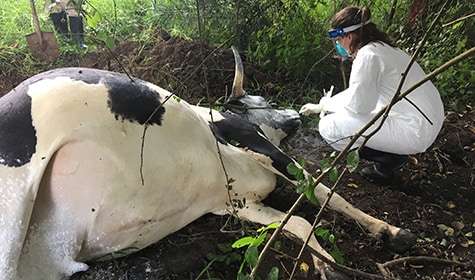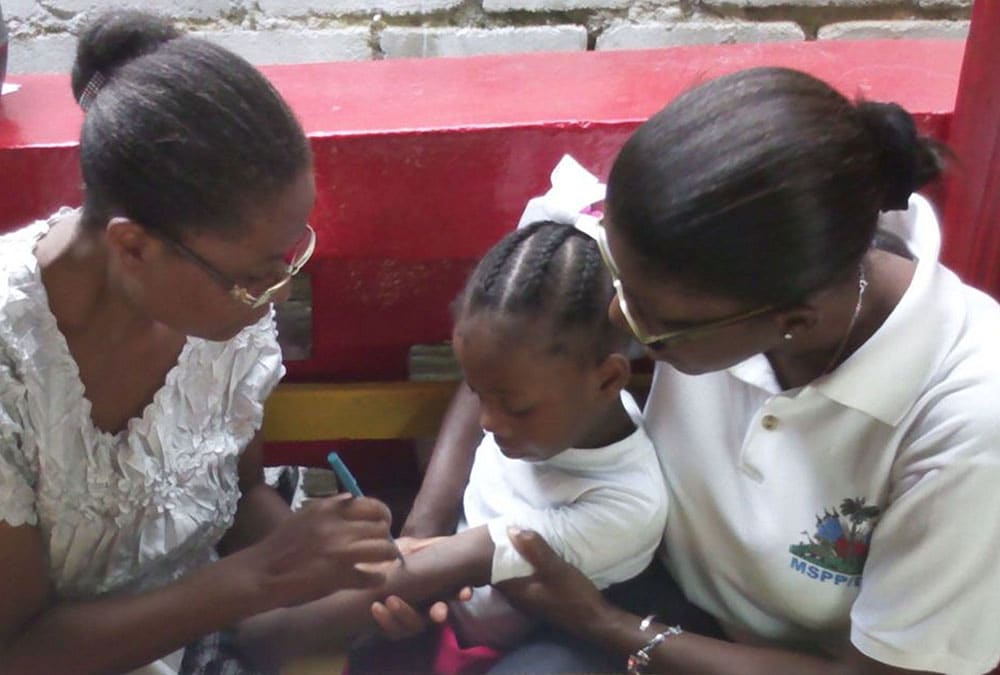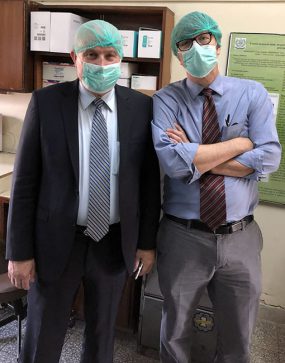FETP – 40 Years of Protecting the World by Building Global Health Capacity

Over the past 40 years, CDC helped establish Field Epidemiology Training Programs (FETPs) throughout the world, with over 18,000 trained disease detectives in over 80 countries. FETP highlights CDC’s commitment to creating a sustainable public health workforce capable of supporting countries’ abilities to prevent, detect, and respond to disease threats including outbreaks like the Coronavirus 2019 pandemic. The growth of FETP since its inception has also contributed to the improvements in disease detection and response worldwide, ultimately helping stop the spread of disease.
FETP’s Growing Impact on a Global Scale
In 1951, CDC created its Epidemic Intelligence Service (EIS) to build a workforce of highly trained professional “disease detectives” who could investigate public health threats in the United States and around the world. The success of the program led to many other countries replicating EIS and creating their own programs, starting with Canada in 1975.

Samples being collected from a suspect cattle carcass in Kiruhura, Uganda. Photo: Bao-Ping Zhu.
Over the next three decades, the EIS approach to building epidemiologic capacity gained strength and CDC established the Field Epidemiology Training Program (FETP) to address the growing need for increased disease detection ability at the global level. In 1980, the first FETP outside North America was established in Thailand in partnership with the World Health Organization (WHO) and the Kingdom of Thailand. A CDC resident advisor (RA) was assigned in-country to provide technical oversight to the program. The training consisted primarily of two years of supervised field work in epidemiology with very limited classroom teaching.
The Thailand program became a model CDC replicated in many countries. However, subsequent FETPs would add a theoretical component, with 20‒25% of the training in the classroom where residents learned advanced surveillance, epidemiologic methods, field investigations, and scientific communication. Although each program received support from CDC, the FETP model focused on building country-owned programs tailored to the public health needs of each nation.
Throughout the years, CDC helped establish FETPs in the Americas, Africa, Asia, and Europe; today, there are more than 50 programs worldwide.
FETP’s Impact on the Evolution of Field Epidemiology Programs
Besides the global expansion of FETPs from one program to more than 50, the program’s unique design has also had an impact on the development and evolution of epidemiology programs. In 2006, the growing need for trained epidemiologists at all levels of the health system (national, provincial, and district) led to the creation of the first three-tiered training approach (initially called the “pyramid approach”) in the Central America Regional FETP (CAFETP). The new training tiers included a four- month basic level program and a nine-month intermediate level program that were added to the existing two-year advanced level program (similar to the original FETP model).

A nurse and an FETP Fellow draw a circle on a kindergartener's arm to measure body reaction to a tuberculosis test. Photo: Apollon Destinay Miracle and TEPHINET
This three-tiered approach was quickly adopted by other FETPs, and currently more than 20 programs host more than one tier of FETP. This multi-track approach has directly impacted the number of epidemiologists trained, and the number of outbreaks investigated. In 2018, for example, 3,628 “disease detectives” worldwide graduated from all levels combined and FETP residents conducted close to 400 outbreak response efforts.
Another addition, also spearheaded by the CAFETP in 2000, was the creation of regional programs instead of single country-focused ones. This new approach helped consolidate efforts and allowed several countries to share resources by creating one FETP to serve the needs of multiple countries. Over the past 20 years, CDC has helped establish five regional programs, covering more than 20 countries. Besides the efficient pooling of resources, an added benefit of this approach was that residents could easily be deployed to other countries when support was needed. The regional approach has fostered stronger ties and allowed for increased cross-collaboration between the ministries of health associated with the countries in the alliance.
In 2004, another innovation took place when Kenya created the Field Epidemiology and Laboratory Training Program (FELTP). The program was the first to include a laboratory component. This allowed the program to broaden its approach to disease detection by including laboratory scientists. This new type of FETP significantly improved the time it takes to identify pathogens by eliminating the need to ship samples to a distant laboratory; rather, they are handled by local laboratory residents within the program.

“I have had the pleasure of working with the FETP program throughout my career at CDC, from the time I served as a FETP Resident Advisor in Jordan to serving as FETP Branch Chief at CDC in Atlanta to engaging with the FETP program and graduates during multiple emergency response activities. During the 2018-2020 Ebola outbreak in DRC, FETP residents and graduates from DRC and surrounding countries were vital in providing contact tracing efforts and community education campaigns among high risk and isolated populations. I feel honored to have been part of a program that graduated so many leaders in public health.”
— Dr. Henry Walke, CDC
Left: In 2017, Dr. Adel Belbeisi from Jordan and Dr. Henry Walke (right) visit an animal health lab at the National Agricultural Research Centre (NARC) in Pakistan as part of a joint Brucellosis collaboration between CDC, EMPHNET, and the Pakistan NIH and NARC. Photo: Dr. Henry Walke, CDC
FETP is Prepared to Address New, Emerging, and Re-emerging Health Threats
As the FETP has matured, other components and areas of focus have been added. The FETP’s initial emphasis was—and still often is—focused more prominently on investigating infectious diseases. With the changing landscape of public health, the curriculum has been revised to more effectively address the ever-growing threats of emerging and re-emerging infectious diseases. One significant change is the renewed focus on zoonotic diseases (animal diseases that can be transmitted to humans), with an emphasis on the One Health approach, which interweaves animal, environmental, and human health. Veterinarians have joined FETP cohorts in recent years to better address zoonotic threats.
In addition, FETP has also added non communicable diseases (NCDs) to its curriculum to address the worldwide increase in the number of non-infectious diseases. According to WHO, in 2016, 71% of deaths globally are caused by NCDs. The addition of NCDs to the curriculum has allowed countries to address the devastating effects of diseases such as heart disease, stroke, diabetes, and cancer in low and middle-income countries.
As the threat of diseases continues to evolve and increase, FETPs continue to play an essential role. FETP residents and graduates address a range of public health issues, including HIV infections, vaccine-derived polio outbreaks, vaccine-preventable diseases, emerging infectious disease outbreaks, and non-communicable diseases. FETPs were involved in some of the largest recent outbreaks, including the 2014 and 2018 Ebola outbreaks and the current COVID-19 pandemic.
According to Dr. Kip Baggett, Chief of the Workforce and Institute Development Branch where FETP is housed at CDC, “Today, more than ever, FETPs play a crucial role in preventing, detecting, and responding to public health threats wherever they occur.” This past year brought stark reminders of the threats we continue to face. WHO declared two public health emergencies of international concern– the Ebola virus disease outbreak in the Democratic Republic of the Congo (DRC) and the novel COVID-19 outbreak–only the 5th and 6th such declarations since 2009. “As we also continue to battle other threats such as polio, measles, malaria, and many other diseases,” continued Kip, “FETP graduates and trainees play critical roles in these and many other responses.”





















.png)









No hay comentarios:
Publicar un comentario